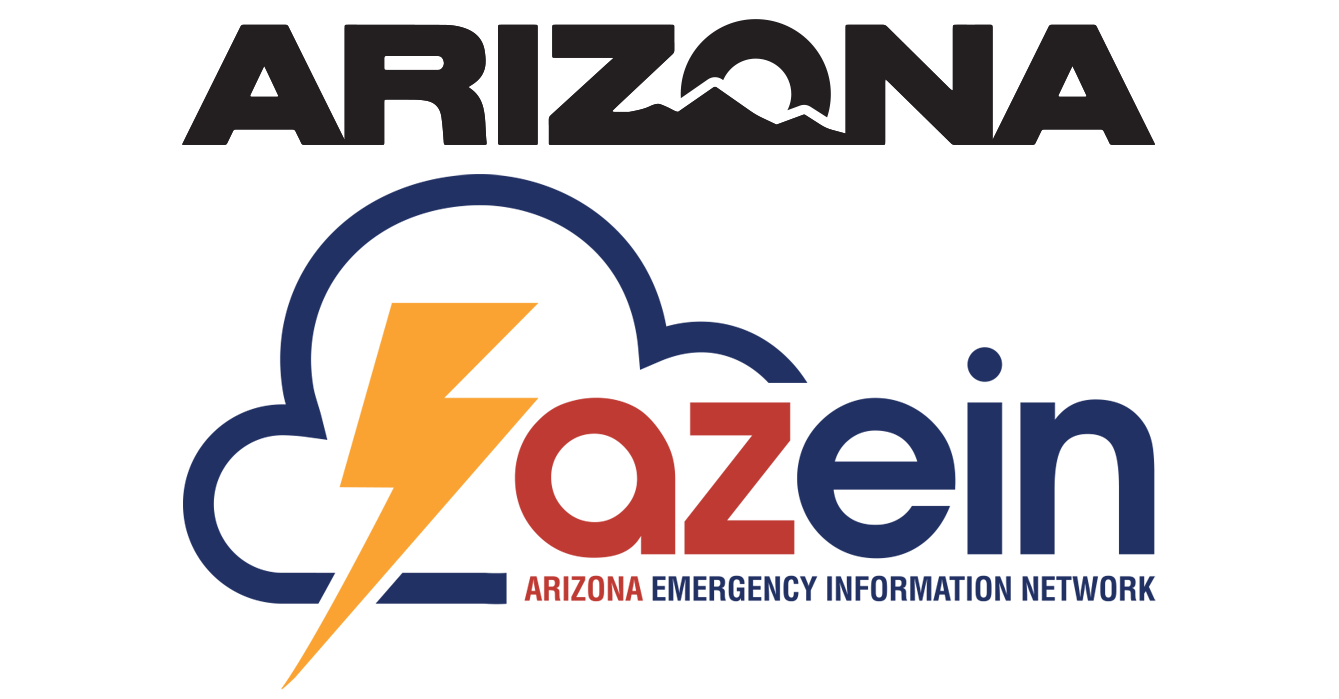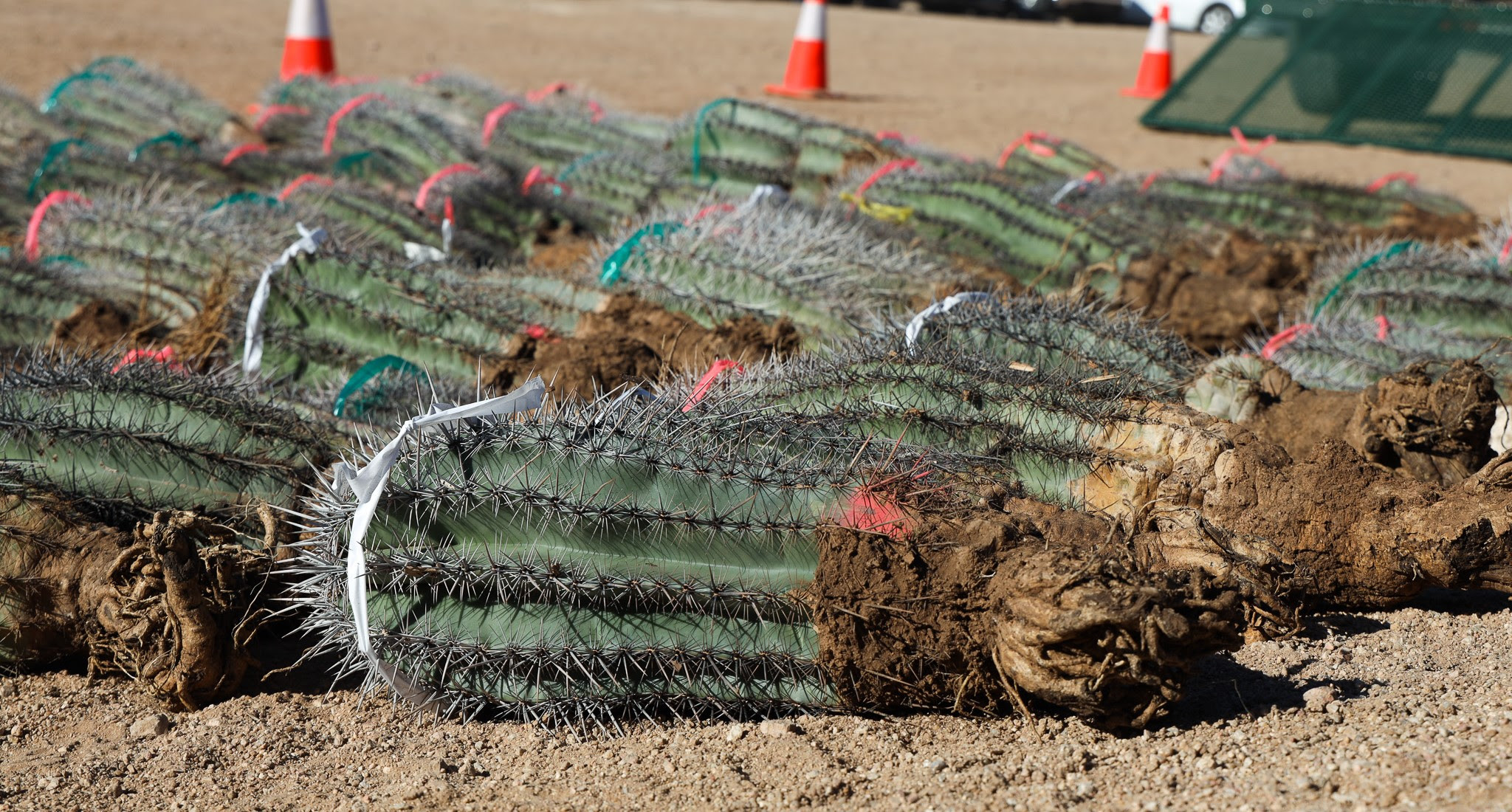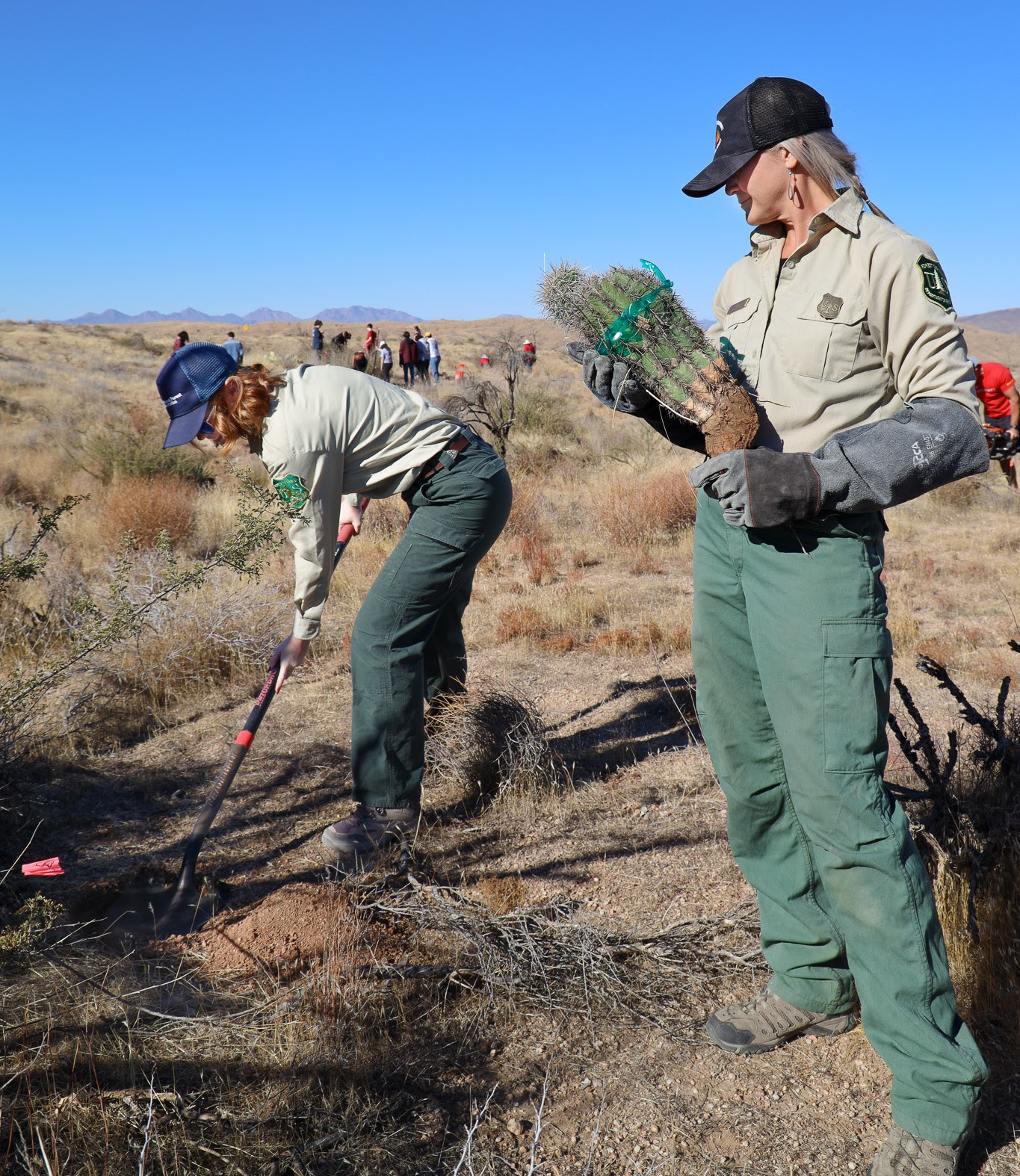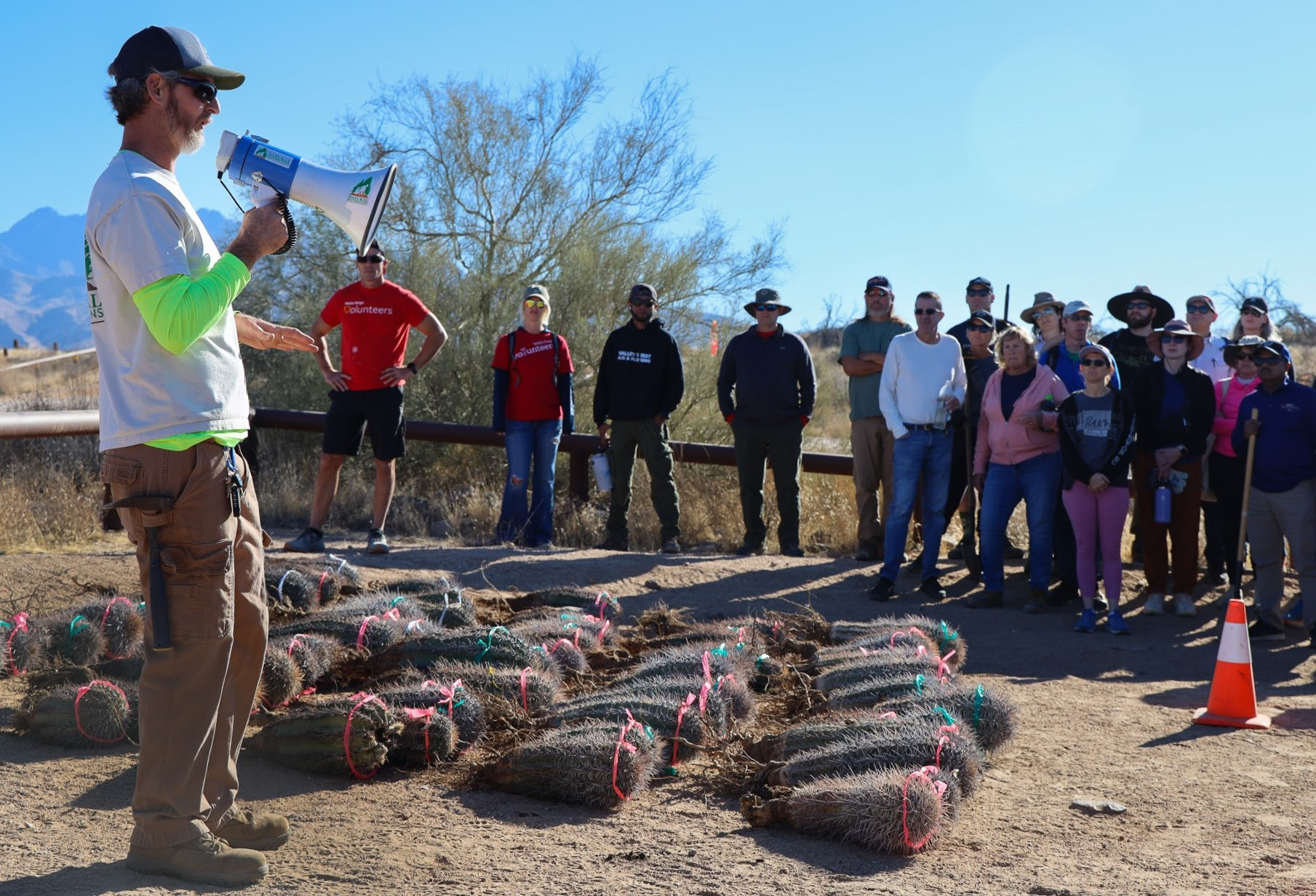Replanting ‘king of the cactus family’ within Bush Fire burn scar remains a labor of love
The saguaro cactus is a centuries-old icon of Arizona’s landscape, having appeared in more movies than actor John Wayne. Placement of the cactus in cartoons such as the “Road Runner and Wile E. Coyote” imprinted the saguaro on generations of impressionable young viewers.
These jolly green giants of the Sonoran Desert reach heights of 40 to 60 feet and can weigh between two and three tons. Saguaros stand as large green pillars atop the dusty landscape, welcoming visitors with open “arms”.
However, as a native plant in the Sonoran Desert, saguaros did not evolve in a fire-adapted ecosystem. With wildfires growing in size, duration, and destructivity in the Sonoran Desert over the past 40 years, more and more saguaros are dying.
Saguaros’ vulnerability to wildfires was highlighted in the summer of 2020 when a burning vehicle ignited the Bush Fire on the Tonto National Forest. Between June 13 and July 6, the fire scorched 193,455 acres on the forest’s Mesa and Tonto Basin Ranger Districts in the Four Peaks Area. As it grew into the fifth largest wildfire in state history, the Bush Fire burned an estimated 80,000 saguaros.
Four years later, Tonto staff such as Drew Ullberg and Bec Veerman remain undaunted as they continue to explore creative ways to obtain and replant saguaros in the Bush Fire burn scar.
“It involves partnering and collaborating with nurseries, local businesses and soliciting federal funding,” said Veerman, the south zone partnerships and volunteer coordinator
on the Tonto. “It includes hosting meetings and engaging with non-profit organizations like the National Forest Foundation and Natural Restorations to aid in replanting
saguaros in the burn scar.”
Good fortune smiled on the Tonto during restoration planning with Arizona Wholesale Growers.
“The company experienced its own fire that damaged 80 saguaros,” Veerman said. “They no longer could sell those saguaros and graciously donated them to us.
“We also were fortunate to salvage saguaros and other cacti from the Bureau of Land Management outside of Wickenburg (Arizona) in 2021,” Veerman added.
Ullberg, the forest biologist on the Tonto, saw the devastation firsthand during his post-fire visit to the burn scar.
“As the fire ripped through the area, some burned saguaros died instantly,” Ullberg said. “Others lived an additional two or three years from stored water in the cacti before eventually dying.”
Forest Service staff removed unharmed arms from these saguaros and placed the arms in a nursery where they received necessary nutrients to promote growth of new roots.
“If all goes well, the arms are replanted in or around the same location prior to the fire,” Veerman said. “And they have a 20- to 30-year head start compared to saguaros grown from seeds.”
Following his site visit, Ullberg initiated conversations with colleagues in Tucson, the Arizona Department of Forestry and Fire Management and researchers at New York University to brainstorm ways to execute medium- to large-scale desert restoration.
“By making friends with researchers, we now have people that are funded through various Forest Service means who monitor and evaluate the land after wildfires,” Ullberg continued.
“Replacing roughly 80,000 saguaros and other native plants will be an arduous task,” Ullberg said. “The Bush Fire wasn’t the first, nor will it be the last, fire to affect the Sonoran Desert’s ecosystem. It seemed logical to organize a group such as a ‘saguaro summit’ or ‘cactus club’, to tap into different areas of expertise and strategize how to replant saguaros and other native species within the burn scar.”
In 2021, he opened a dialogue with Forest Service colleagues in the Southwest Region located in Albuquerque, New Mexico.
“I emphasized the plight of the Sonoran Desert due to wildfires and the importance of saguaros to the desert’s ecosystem,” Ullberg said.
Advocacy was reflected in the Southwest Region’s March 2022 strategic plan entitled “Looking 20 Years into the Future”. One of the document’s objectives is recovering the Sonoran Desert and increasing the saguaro population to the level that sustains the ecosystem.
Tonto staff also applied for and received funding for the Bush Fire restoration project from the Bipartisan Infrastructure Law of 2021. This law invests about $5.5 billion in lands and resources entrusted to the Forest Service, including many of the landscapes and watersheds we manage together with our federal, tribal, state, private and other partners.
Of the $5.5 billion, the Forest Service is investing about $3 billion over a five-year period to reduce the risk of wildland fire and restore ecosystems.
Ullberg also was involved in finalizing a recently signed agreement between the Tonto and Desert Botanical Garden wherein the Phoenix-based garden will custom grow saguaros from locally sourced seeds.
“The targeted goal is to grow 10,000 or more cacti by 2028 and replant them in the burn scar,” Ullberg said.
Succulent support from friends
A variety of organizations aid the Tonto’s replanting efforts. Among them is Natural Restorations, an Arizona-based nonprofit organization that works with veterans to revitalize natural areas.
Co-founded by Justin and Nicole Corey, Natural Restorations launched a replanting program in November 2020 following the Bush Fire and started replanting various cacti – including saguaros – in the burn scar in May 2021.
The program evolved into the ‘Save Our Saguaros” restoration project that also includes the National Forest Foundation, Wells Fargo, Four Peaks Brewing Company and the Tonto’s Mesa Ranger District.
Natural Restorations held its 5th annual Save Our Saguaros replanting event and Veterans Day celebration on Nov. 9. Approximately 150 volunteers replanted 100 saguaros in the burn scar, raising the program’s total to 2,283 replanted saguaros. The organization’s own Dedicated Restoration Team also has replanted nearly 5,000 other cacti -- such as hedgehog, barrel and cholla as well as native plants such as ocotillo -- in the burn scar.
Plans are underway for Natural Restorations to conduct more saguaro replanting events in March and April 2025.
“Natural Restorations and its team of veterans have been, and continue to be, the biggest contributor regarding replanting saguaros in the Bush Fire burn scar,” Veerman said. “Natural Restorations is an incredible partner!”
In summer 2022, the Arizona Lottery funded the Goldfield Fire Center’s Cactus Nursery on the Tonto. The nursery provides a safe environment for salvaged saguaros and other native cacti conditioned for restoration within the burn scar. It is part of Arizona Lottery’s ‘Gives Back’ sponsorship program that, in turn, is in partnership with the National Forest Foundation’s ‘Save Our Saguaros’ conservation initiative.
The Four Peaks Brewing Company formally adopted the Bush Fire burn area and has donated thousands of dollars to the National Forest Foundation to aid the restoration project. Additionally, staff periodically water replanted saguaros as needed when the burn scar receives little rainfall.
“We’ve also had Boy Scouts assist in replanting other cacti in the burn scar, such as cholla and prickly pear,” Veerman said. “It’s truly uplifting to coordinate and work with diverse groups interested in helping the Forest Service restore the burn scar.”
Even with public support, Veerman and Ullberg acknowledge that reintroducing saguaros to levels prior to the Bush Fire will take several years. The timeline is partially dependent on whether replanted saguaros fully take root in the Sonoran Desert that occupies the southern half of Arizona. Overall this desert covers approximately 100,387 square miles of the southwestern United States and northwestern Mexico
Saguaros grow slowly, averaging between 1 and 1.5 inches in their first eight years. When one dies it takes over a century to replace it as saguaros do not reach adulthood until around age 125.
Replanting saguaros supports forest restoration, a foundational component of the Tonto National Forest Land Management Plan. Reforestation aids the environment by preserving biodiversity within the ecosystem.
“Many people think the Sonoran Desert is barren but it’s brimming with life and serves as a keystone ecosystem for the nation,” Veerman said. “Saguaros play a key role by providing shelter, food, and nesting sites for many animals. Their iconic status continues to inspire efforts to preserve the cactus as well as the unique desert ecosystem it anchors.”




